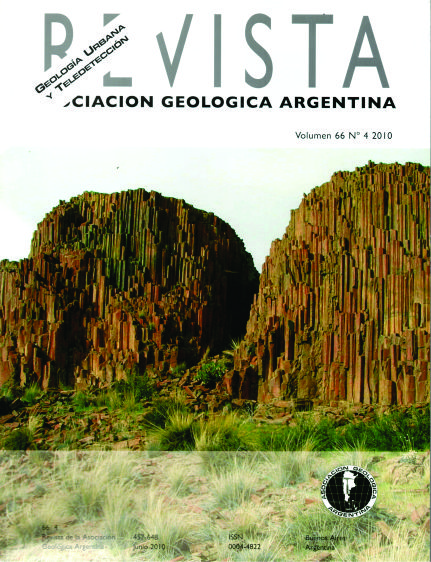Inventory and classification of basaltic occurrences of Patagonia based on satellite images and G.I.S, province of Santa Cruz
Main Article Content
Abstract
Basaltic plateaus are a typical feature of the Patagonian landscape. Their origin is associated with basaltic flows that took place in different effusive periods of the Tertiary and Quaternary. According to the age, morphology of the different lava fields has been modified by different erosion processes. The oldest basaltic flows were elevated tens to hundreds of meters by "relief inversion processes". In the contact zone between the basaltic flow and the underlying rock, springs are originated that provide an extra water input to the extra-Andean Patagonian environment, favouring the development of meadows (mallines), a natural resource of high economic, ecological and scenic value. With the aim of providing a tool for evaluating the hydrological importance of meadows, a survey of these volcanic landforms was conducted in the province of Santa Cruz, Argentina. Digital processing and visual interpretation techniques were applied on satellite images of medium spatial resolution. The results were expressed into maps and by means of databases, and the information was incorporated into a GIS environment. Data obtained for each basaltic feature, regarding topographic, geological and geomorphological aspects, area of the lava plateau and presence of meadows on their slopes and proximal areas, were statistically analyzed. The information obtained provided us with a general characterization of these landforms and allowed us to design a classification system whose importance in the location and development of meadows was confirmed.
Article Details

This work is licensed under a Creative Commons Attribution-NonCommercial 4.0 International License.
Nota de copyright
Los autores conservan los derechos de autor y garantizan a la revista el derecho de ser la primera publicación del trabajo licenciado según una licencia de atribución Creative Commons que permite a otros compartir el trabajo con el reconocimiento de la autoría y de la publicación en la que se publicó por primera vez.
Declaración de privacidad
Los nombres y direcciones de correo electrónico introducidos en esta revista se usarán exclusivamente para los fines declarados por esta revista y no estarán disponibles para ningún otro propósito u otra persona.

